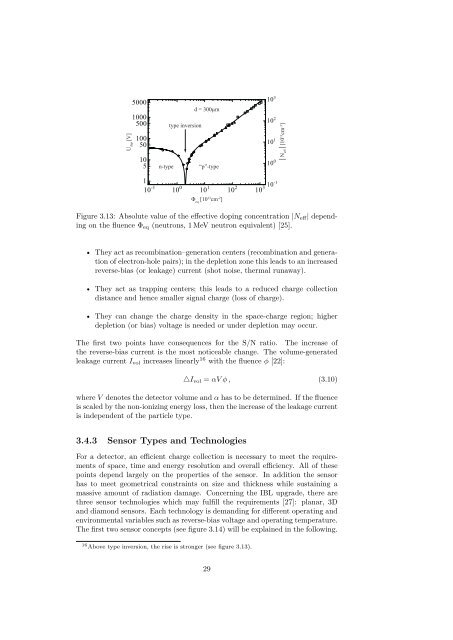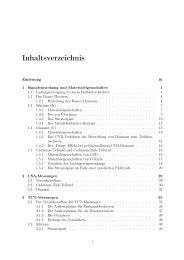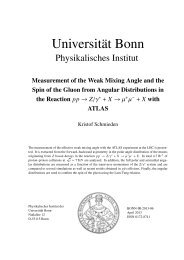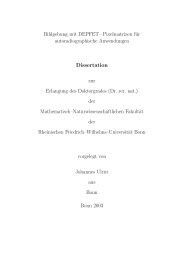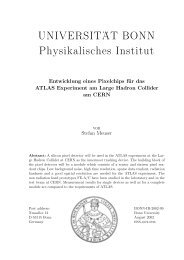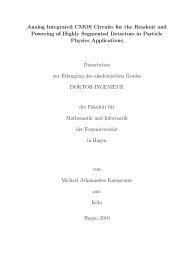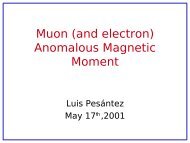Jens Janssen Diploma Thesis - Prof. Dr. Norbert Wermes ...
Jens Janssen Diploma Thesis - Prof. Dr. Norbert Wermes ...
Jens Janssen Diploma Thesis - Prof. Dr. Norbert Wermes ...
You also want an ePaper? Increase the reach of your titles
YUMPU automatically turns print PDFs into web optimized ePapers that Google loves.
d = 300µmU dep[V]n-typetype inversion“p”-type│N eff│[10 11 cm -3 ]Φ eq[10 12 cm -2 ]| depend-Figure 3.13: Absolute value of the e ective doping concentration |N eing on the fluence eq (neutrons, 1MeV neutron equivalent) [25].• They act as recombination–generation centers (recombination and generationof electron-hole pairs); in the depletion zone this leads to an increasedreverse-bias (or leakage) current (shot noise, thermal runaway).• They act as trapping centers; this leads to a reduced charge collectiondistance and hence smaller signal charge (loss of charge).• They can change the charge density in the space-charge region; higherdepletion (or bias) voltage is needed or under depletion may occur.The first two points have consequences for the S/N ratio. The increase ofthe reverse-bias current is the most noticeable change. The volume-generatedleakage current I vol increases linearly 16 with the fluence „ [22]:—I vol = –V „ , (3.10)where V denotes the detector volume and – has to be determined. If the fluenceis scaled by the non-ionizing energy loss, then the increase of the leakage currentis independent of the particle type.3.4.3 Sensor Types and TechnologiesFor a detector, an e cient charge collection is necessary to meet the requirementsof space, time and energy resolution and overall e ciency. All of thesepoints depend largely on the properties of the sensor. In addition the sensorhas to meet geometrical constraints on size and thickness while sustaining amassive amount of radiation damage. Concerning the IBL upgrade, there arethree sensor technologies which may fulfill the requirements [27]: planar, 3Dand diamond sensors. Each technology is demanding for di erent operating andenvironmental variables such as reverse-bias voltage and operating temperature.The first two sensor concepts (see figure 3.14) will be explained in the following.16 Above type inversion, the rise is stronger (see figure 3.13).29


